
Hybrid floors are an innovative substitute in modern architecture, providing a blend of some of the best features from different flooring materials.
In architecture, hybrid floor systems are designed to be cost-effective and eco-friendly, providing long-lasting performance without compromising on visual appeal. They offer a versatile solution that can enhance the look of living areas, kitchens, offices, and public spaces.
Modern hybrid floors are preferred for their ease of maintenance and solid construction making them a smart investment for any project. These floors enhance the aesthetic of interiors while contributing to a greener environment.
Why choose hybrid flooring?
Hybrid flooring provides a unique blend of durability and visual appeal, making it suitable for residential and commercial spaces. With hybrid floor systems, you enjoy a cost-effective and versatile option that suits modern architectural needs.
Modern hybrid floors are designed to be eco-friendly supporting sustainable construction while still being tough enough to handle high traffic.
If you’re renovating a home with a stylish residential hybrid floor, or just outfitting an office with practical hybrid commercial flooring, these innovative flooring solutions deliver long-lasting quality without compromising on design.
Their attractive finish and superior performance make them a smart choice for anyone looking to enhance the beauty and functionality of their space.
Another key advantage is its ease of installation. Many hybrid floor systems use a simple click-lock mechanism, allowing for quick and hassle-free fitting without the need for nails or adhesives.
This not only reduces installation costs, but also make it a great option for DIY enthusiasts or projects with tight deadlines. It’s important to note that before installing hybrid flooring, a floor underlayment may need to be applied.

How do hybrid floor systems work?
Hybrid floor systems work by combining the best features of different materials to create flooring that is functional and visually appealing. These systems integrate a durable core with a decorative top layer, resulting in modern floors that are designed to withstand heavy use while maintaining an attractive finish.
Typically, the core layer is made from high-density fiberboard or composite materials that often include recycled wood fibers or other natural reclaimed components. The decorative layer, which provides the look of natural wood or stone, is created using either a thin veneer or advanced digital printing practices that reduces waste.
A protective top coat, usually formulated with low-VOC polyurethane, seals the floor and enhances its longevity while minimizing harmful emissions. Many manufacturers are committed to eco-friendly practices by using sustainably sourced materials and energy-efficient production methods.
These factors make hybrid flooring a smart, sustainable option for modern interiors, as it combines the performance of engineered materials with a design that supports responsible resource use and reduced environmental impact.
If you’re considering residential hybrid floors for your home or commercial hybrid flooring for an office space, these systems offer high performance at a reasonable cost.

How Do Hybrid Floors Enhance Architectural Design?
Hybrid floors deliver a sleek, modern look that complements a wide range of interior styles. Whether it is installed as residential hybrid floors in a home, or commercial flooring in an office, these flooring solutions add visual interest and sophistication to any space.
Architects value modern hybrid floors for their ability to withstand everyday wear while maintaining an attractive finish, making them an excellent choice for busy environments.
Where Are Hybrid Floors Commonly Used?
In residential settings, homeowners are increasingly opting for residential hybrid floors that provide a modern look while standing up to everyday use. These flooring solutions offer a sleek finish designed to last making them a great choice for modern homes.
In commercial areas, businesses can benefit from commercial hybrid flooring which combines durability with an attractive look which is ideal for high-traffic areas. Offices, retail outlets, and hospitality venues will appreciate the ease of maintenance and longevity that hybrid flooring provides.
Architects will also favor hybrid floors as part of their sustainable architectural flooring approach. With so many eco-friendly options available, builders can create stylish, responsible designs that reduce the environmental impact.

How do hybrid floors enhance residential projects?
Homeowners who are looking for a modern and functional flooring option can choose residential hybrid floors because they provide the warmth and elegance of natural materials while being highly resistant to daily wear and tear.
These modern hybrid floors are designed to handle the demands of busy households making them perfect for high-traffic areas such as living rooms, kitchens, and hallways. One of the biggest advantages of hybrid flooring in residential spaces is its water resistant properties, which make it suitable for homes with children and pets.
Unlike traditional hardwood, hybrid flooring does not warp or swell when exposed to moisture, ensuring a longer-lasting solution. Homeowners will also appreciate hybrid floors as they deliver the look of premium materials without the high maintenance or price tag. Additionally, with a variety of colors, textures and finishes available, hybrid flooring allows homeowners to achieve their desired look.
Finally, hybrid floors are changing the game in modern architecture, offering a balance of durability, style and sustainability. As both residential hybrid floors and commercial hybrid flooring continue to become popular, architects and designers are increasingly incorporating them into contemporary projects.
Images from House in Konstancin by BDR Architekci – see full article here.
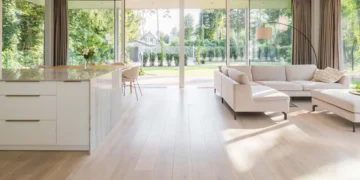













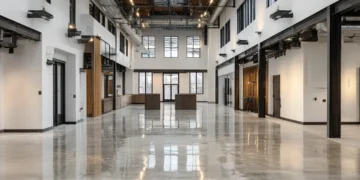
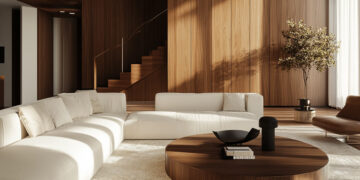
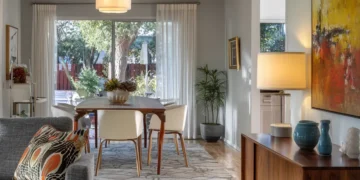
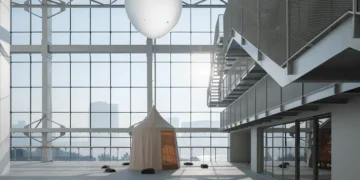


had no idea there is such thing as hybrid floors , damn!